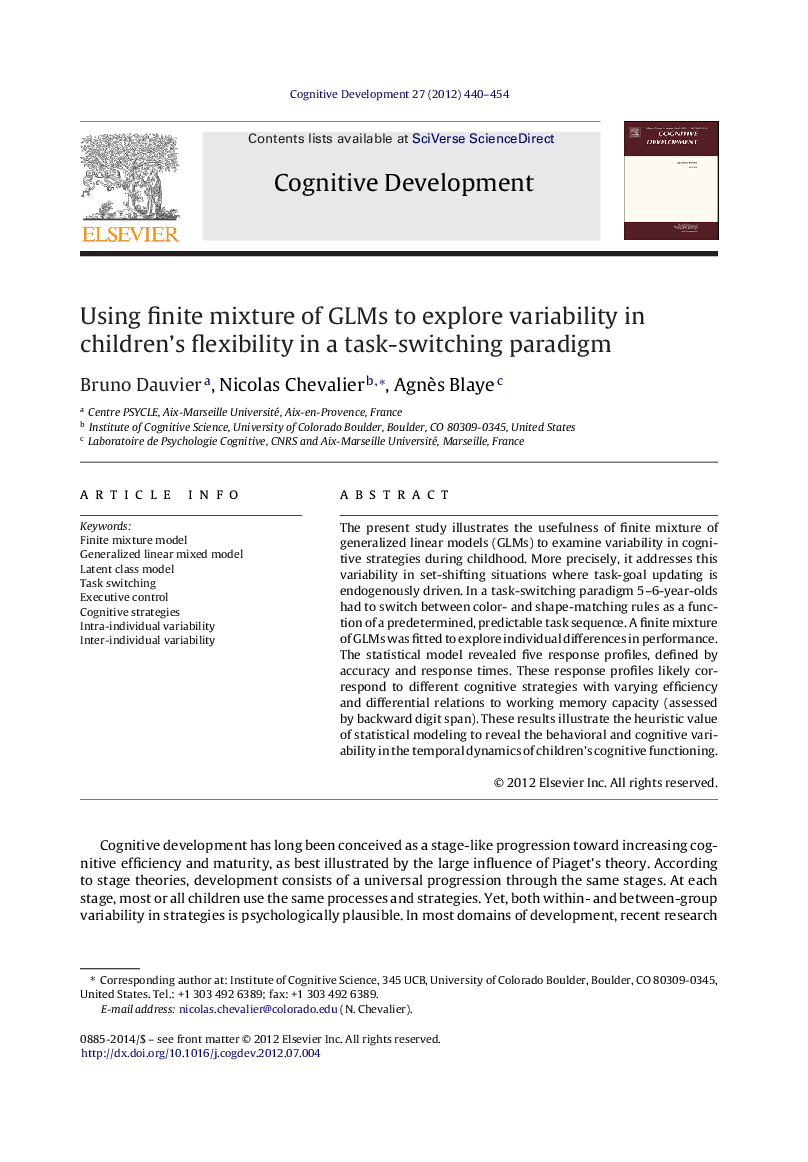| Article ID | Journal | Published Year | Pages | File Type |
|---|---|---|---|---|
| 916517 | Cognitive Development | 2012 | 15 Pages |
The present study illustrates the usefulness of finite mixture of generalized linear models (GLMs) to examine variability in cognitive strategies during childhood. More precisely, it addresses this variability in set-shifting situations where task-goal updating is endogenously driven. In a task-switching paradigm 5–6-year-olds had to switch between color- and shape-matching rules as a function of a predetermined, predictable task sequence. A finite mixture of GLMs was fitted to explore individual differences in performance. The statistical model revealed five response profiles, defined by accuracy and response times. These response profiles likely correspond to different cognitive strategies with varying efficiency and differential relations to working memory capacity (assessed by backward digit span). These results illustrate the heuristic value of statistical modeling to reveal the behavioral and cognitive variability in the temporal dynamics of children's cognitive functioning.
► Finite mixture of GLMs is a useful instrument to explore children's cognitive variability. ► Variability was explored in an alternating-runs version of a task-switching paradigm. ► Five different response profiles with varying efficiency were observed. ► The findings point out distinct strategies in goal updating and maintenance associated with varying working memory capacity.
